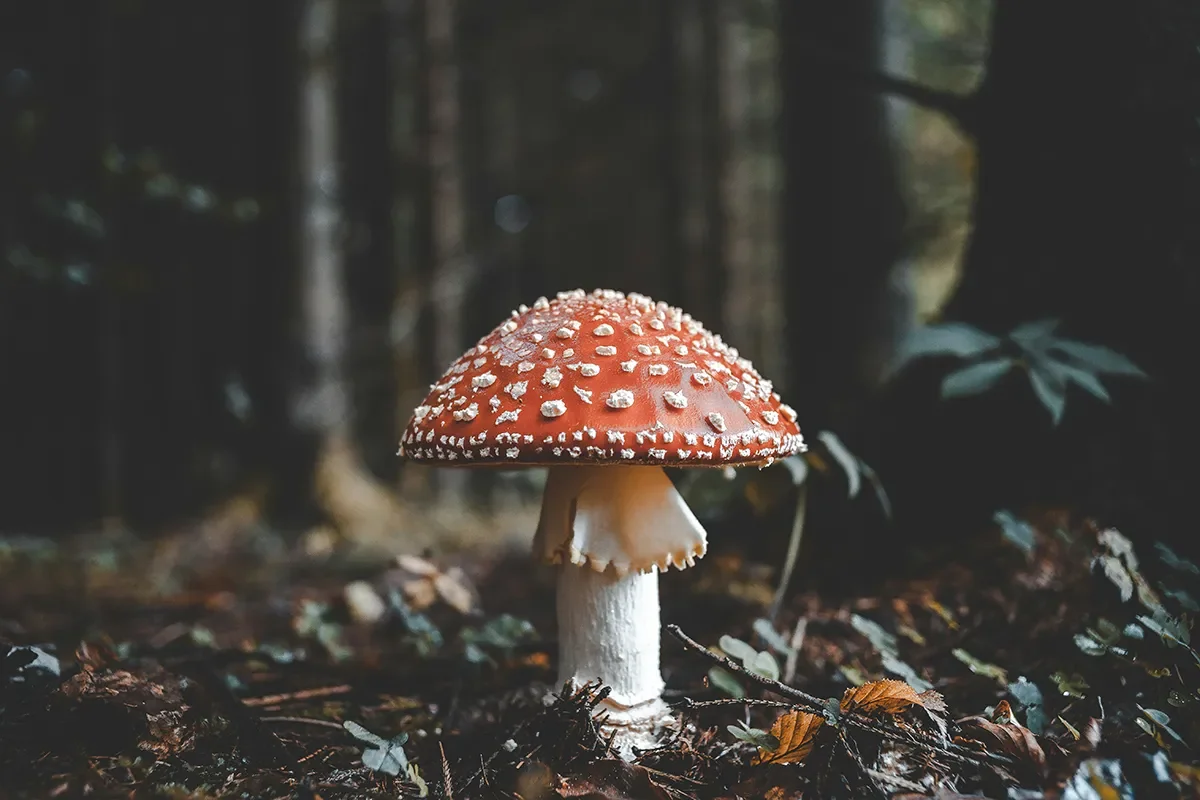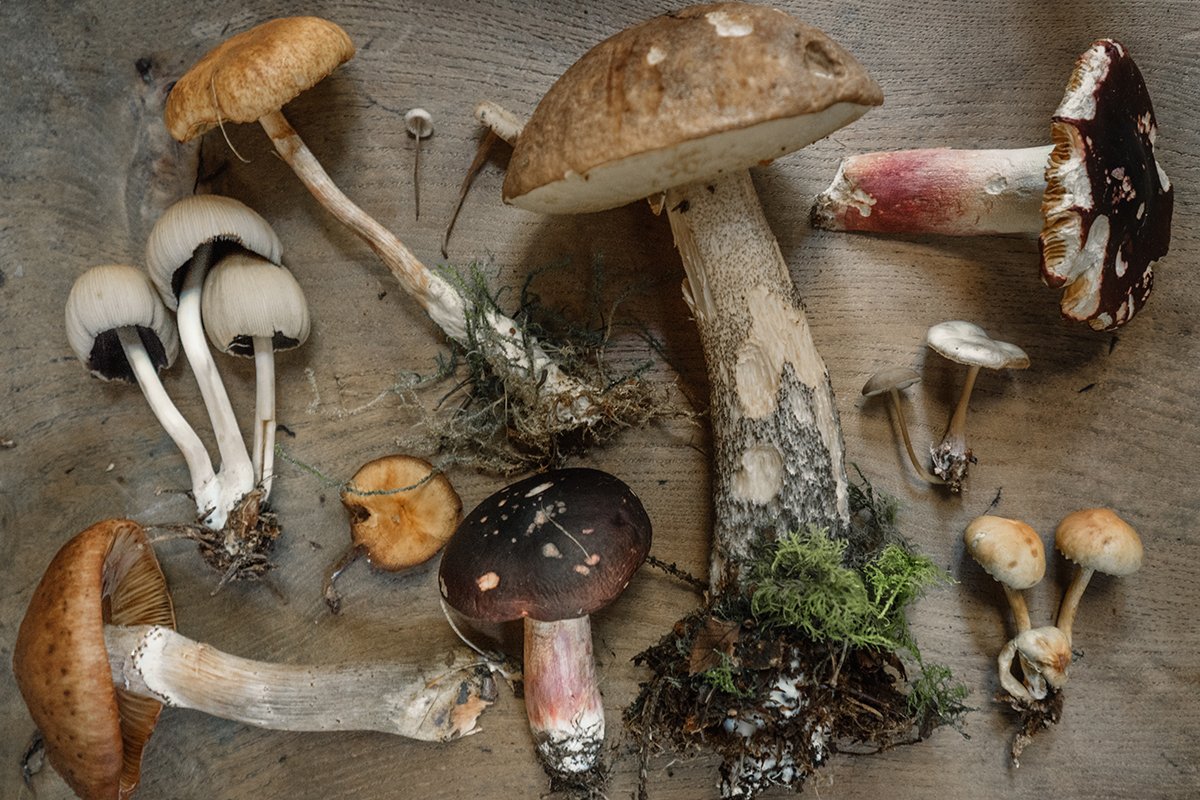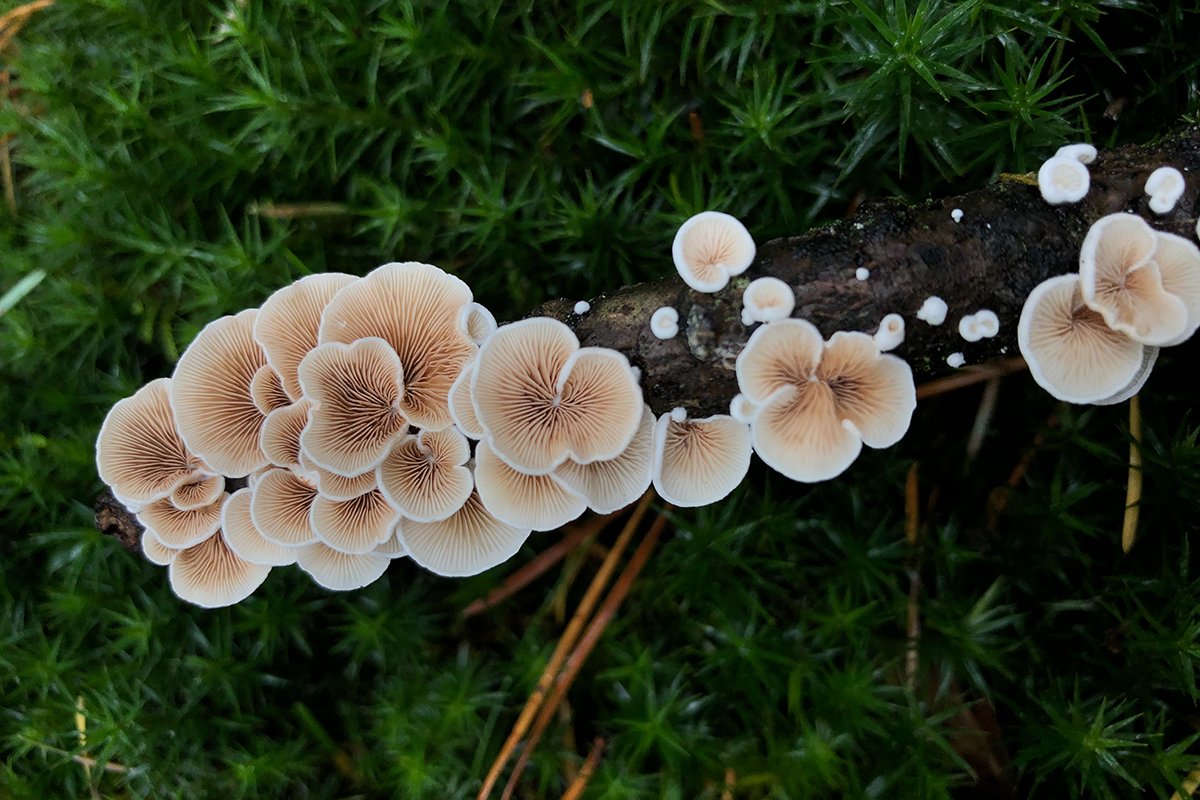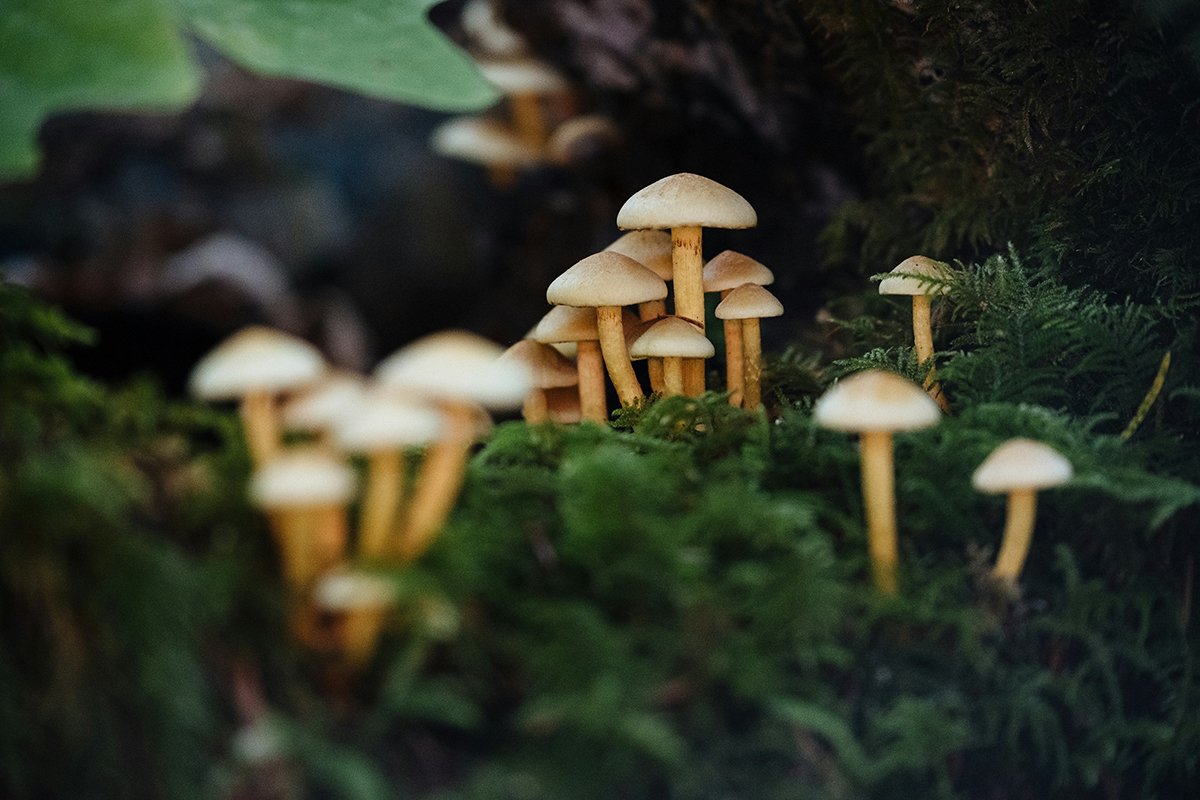There’s an old saying that goes something like, There are old mushroom hunters, and there are bold mushroom hunters, but there are no old and bold mushroom hunters. While I always urge utmost caution when picking wild mushrooms, I can’t say I fully agree with these cautionary words. At least, not in all of their interpretations.
You see, while I’m really not that old (31 years young at the time of writing this article), I can’t deny that I’ve eaten an adventurous quantity of different wild mushrooms. Some are uncommon, others are undescribed by science, and some unknown in occidental cuisine. People might consider me bold for this, but believe me, I always stick to the safe side.
When a curious friend asked me exactly how many different wild mushrooms I’ve eaten, I quickly lost count after about 25 species. I had to reach for pen and paper to begin writing them down, one scientific name at a time. I started with my favorite group, the Chanterelles. I counted 12 distinct species of true Chanterelles (Cantharellus) that I’ve had the pleasure of eating, along with 15 Boletes (Boletales), four Hedgehogs (Hydnum), and the list went on.
I finally stopped counting at about 125 different species of edible mushrooms. Some of these are from the western United States, some from Mexico and Central America, and others from Europe. I know there’s a lot more that went unaccounted as well.
Just to be clear, it’s not my goal to eat as many different types of mushrooms as I can. I pick the ones I know and occasionally experiment with new ones. If I consume a new variety, it’s usually because I am in a setting where there is tradition or experience with its consumption. Either that or I’ve researched them thoroughly, have heard they are delicious, and/or already know them from years of observation.
For context, around the world, there are more than 1,000 species of mushrooms consumed as food. In China alone, there are over 900 edible species, and in Mexico, rural communities consume over 200 mushroom species. Some European countries consume well over 50 different types of wild mushrooms.
While there is no doubt one should exert unquestionable caution when picking wild mushrooms, the charming saying about old-bold mushroom hunters being placed on the endangered species list is not completely accurate. No, I’ve been around many old-timers who eat all sorts of unconventional mushrooms. They boldly step outside of the status quo and experiment with varieties not consumed in their traditional cuisine.
Mushrooming Isn’t an Extreme Sport, But Don’t Mess up

Image by Florian van Duyn
Today, it’s even easier to stay safe than when some of these old-timers started mushrooming. There’s greater access to information and more studies about mushroom toxicity. They didn’t have the luxury of the internet or the modern field of mycology.
For example, an elderly man at a French mushroom festival told me he used to love eating a type of mushroom known as Elfin Saddles (Helvella sp.). Today, it’s known that Elfin Saddles contain a toxic compound called monomethylhydrazine. This compound is not only carcinogenic, but it can also cause severe health issues, although some speculate that cooking them thoroughly renders them edible. The man said neither he nor his colleagues eat them anymore.
The caution needed when it comes to picking wild mushrooms should not be underestimated. You need to know what you’re doing; if not, it can be a tragic mistake. A 2018 study that analyzed mushroom poisonings in the United States between 1999 and 2016 showed that there were more than 700 cases of mushroom poisoning that resulted in major harm over the 18-year period. In fact, 52 of these resulted in deaths. In total, there were more than 130,000 reported poisonings (about 7,428 per year).
Despite these statistics, I’m not fearful when it comes to eating wild mushrooms. It’s not an extreme sport like BASE jumping or flying around in a squirrel suit. Mushrooms aren’t out to get you, and they can’t make you sick simply by touching or smelling them.
“It’s as simple as not eating anything unless you know exactly what it is and how to eat it.”
Timo Mendez
It’s as simple as not eating anything unless you know exactly what it is and how to eat it. As the saying goes, “When in doubt, throw it out.” Don’t be careless or, even worse, over-confident. Plus, there’s a special type of nervousness that happens when you sit in doubt about a mushroom you just ate—and, trust me, it’s not worth it, even if you end up fine.
A rule I always tell new pickers is to never consume a new mushroom without being introduced to it by somebody who knows it and has a history of eating it. After all, identifying it is one thing, but safely consuming it is another. Some perfectly edible mushrooms can make you very sick if you don’t know what you’re doing.
The Line Between Toxic and Edible Is Sometimes Blurry

Image by Andrew Ridley
Chicken of the Woods is a well-known edible mushroom that still gets many people sick. That’s because when the mushroom is old, it becomes woody, tough, and impossible for your digestive system to handle. For this reason, many foragers only harvest the tender margin of the mushroom, which is easier to digest. Some folks par-boil the mushroom before cooking to make it even more palatable. While it’s not going to cause you serious harm, it can result in a harsh tummy ache and a bad case of diarrhea. A small subset of people get this reaction even when it’s properly cooked.
Morels are another example of gourmet mushrooms that require proper preparation in order to render them edible. Despite them being sold every year in gourmet supermarkets and reaching prices well over $50 per pound, they can be quite dangerous to the unsuspecting victim.
Like the Elfin Saddles mentioned earlier, they too contain a type of toxin that requires thorough cooking to eliminate it. Just this year, there were two deaths and over 50 people poisoned at a sushi restaurant in Montana that thought incorporating this mushroom raw into their menu would be a good idea. It definitely wasn’t.
In Mexico, I’ve eaten the Scaly Vase (Turbinellus floccosus) on many occasions, despite it being considered toxic in almost all North American field guides. That’s because, over generations, people here discovered that the entire surface of the mushroom has to be peeled to render it edible. Meanwhile, in the United States, poisonings with this mushroom happen every year due to their resemblance to the edible Chanterelles. Intoxications result in what I call the “PVD”—pain, vomiting, and diarrhea.
Some people suspect that there may be regional differences in the species’ toxicity, but it hasn’t been studied. For your safety, do not experiment with this mushroom.
One final example of mushrooms that blur the lines between toxic and edible is the iconic Fly Agaric (Amanita muscaria) mushroom. These red-and-white polka-dot mushrooms are also considered toxic in almost any field guide you can find. That’s because they contain a cocktail of toxins that can result in diarrhea, hallucinations, dizziness, sweating, disorientation, vomiting, nausea, and, in some cases, long-term health impacts.
Meanwhile, in Japan, there are communities that dry the mushroom, boil it in water, and then consume it with no negative side effects. As it turns out, their methods of preparation are an effective way of detoxifying this species. Recently, I ate some detoxified Fly Agaric pickles prepared by a friend (who is bold but highly experienced), and they were surprisingly delicious. (And no, there were no unexpected side effects.) That being said, don’t try this process at home unless you really know what you’re doing.
Learn From People Who Know More Than You

Image by Guido Blokker
My biggest recommendation to beginner foragers is to learn from people who know more than you. If you hear your coworker’s partner is a mushroom enthusiast, bribe him or her with brownies and cookies until he offers to take you out on a walk. While we love to keep our spots secret, the truth is that most of us enjoy the company and sharing our knowledge. Although to be completely honest, we probably won’t take you to our best spots the first time around.
Alternatively, find the closest mycological society to your area. Almost every big city has one nowadays, and they’re eager to share their knowledge (here is a global directory of mushroom clubs). Also, keep your eyes out for guided walks, festivals, and other mushroom-related events where you can network and find your way to the woods with experts.
Once you become entangled in the network of mushroom enthusiasts, you are bound to meet many unique characters; some are eclectic and whimsical, others “outdoorsy” and disciplined, and some will probably seem quite bold.
Bold Is Not the Same as Careless

Image by Jesse Bauer
For me, there’s a big difference between being bold and being careless. It’s bold to step outside of the norm and experiment with new mushrooms, but it’s careless to eat mushrooms without knowing exactly what you are doing. If you’ve properly done your homework, eating a new species is not exactly a courageous or daring act. It’s simply about being educated, experienced, and using a proven methodology.
Finally, this article is not a guide or instruction manual for how to pick mushrooms. I don’t encourage anyone to step outside of their comfort zone without many years of experience. Be careful when using online guides, and if you need a reference, stick to the most reliable guides for your local area. When possible, always opt for learning from people instead of books or websites. Stay safe, keep your eyes peeled, and enjoy the wild world of mushrooms.
The post Adventurous Mushroom Foraging: How to Be Bold Without Being Careless appeared first on Outdoors with Bear Grylls.
https://outdoors.com/adventurous-mushroom-foraging/
 CampingSurvivalistHuntingFishingExploringHikingPrivacy PolicyTerms And Conditions
CampingSurvivalistHuntingFishingExploringHikingPrivacy PolicyTerms And Conditions
